The daily school run presents a unique set of challenges for parents and caregivers. It demands vehicles that combine safety, reliability, space for backpacks and sports equipment, ease of use for quick drop-offs, and the durability to withstand constant use.
While many modern vehicles advertise themselves as family-friendly, real-world application reveals significant differences in how they handle this twice-daily ritual.
The ideal school run vehicle needs to accommodate children of various ages, offer convenient access for loading and unloading, provide adequate visibility in busy school zones, and maintain efficiency for what often becomes the most frequent journey families make.
This guide examines five vehicles that excel in these crucial areas, making the hectic morning dash and afternoon pickup as smooth as possible.
Conversely, we also highlight five vehicles that, despite their merits in other contexts, present challenges or limitations that make them less than ideal for the school run ritual that becomes such a defining part of family life for years on end.
5 Cars That Can Handle the School Run
Getting the kids to school shouldn’t feel like a chore—or a battle with parking lots and morning traffic. You need a car that’s tough enough to handle the daily grind, spacious enough for backpacks and sports gear, and stylish enough that you don’t feel like you’ve given up on driving altogether.
In this article, we’re highlighting five cars that crush the school run with a perfect mix of practicality, reliability, and a little bit of fun behind the wheel.
1. Honda Odyssey
The Honda Odyssey stands as perhaps the quintessential school run vehicle, embodying everything a parent could need during the hectic before-school rush and afternoon pickup.
Its sliding doors available with power operation, represent a game-changer in crowded parking lots and tight drop-off zones. They eliminate the risk of children accidentally dinging adjacent vehicles and provide a wide opening that allows children to enter and exit without contortion, even when parked in tight spaces.
Inside, the Odyssey truly shines with its exceptional cabin space and intelligent layout. The three-row seating accommodates up to eight passengers, making it ideal for carpooling arrangements.
Honda’s innovative “Magic Slide” second-row seats can be reconfigured to create easy pathways to the rear seats or moved together for better access to children who need assistance with belts or belongings. This flexibility proves invaluable when juggling multiple children of different ages.
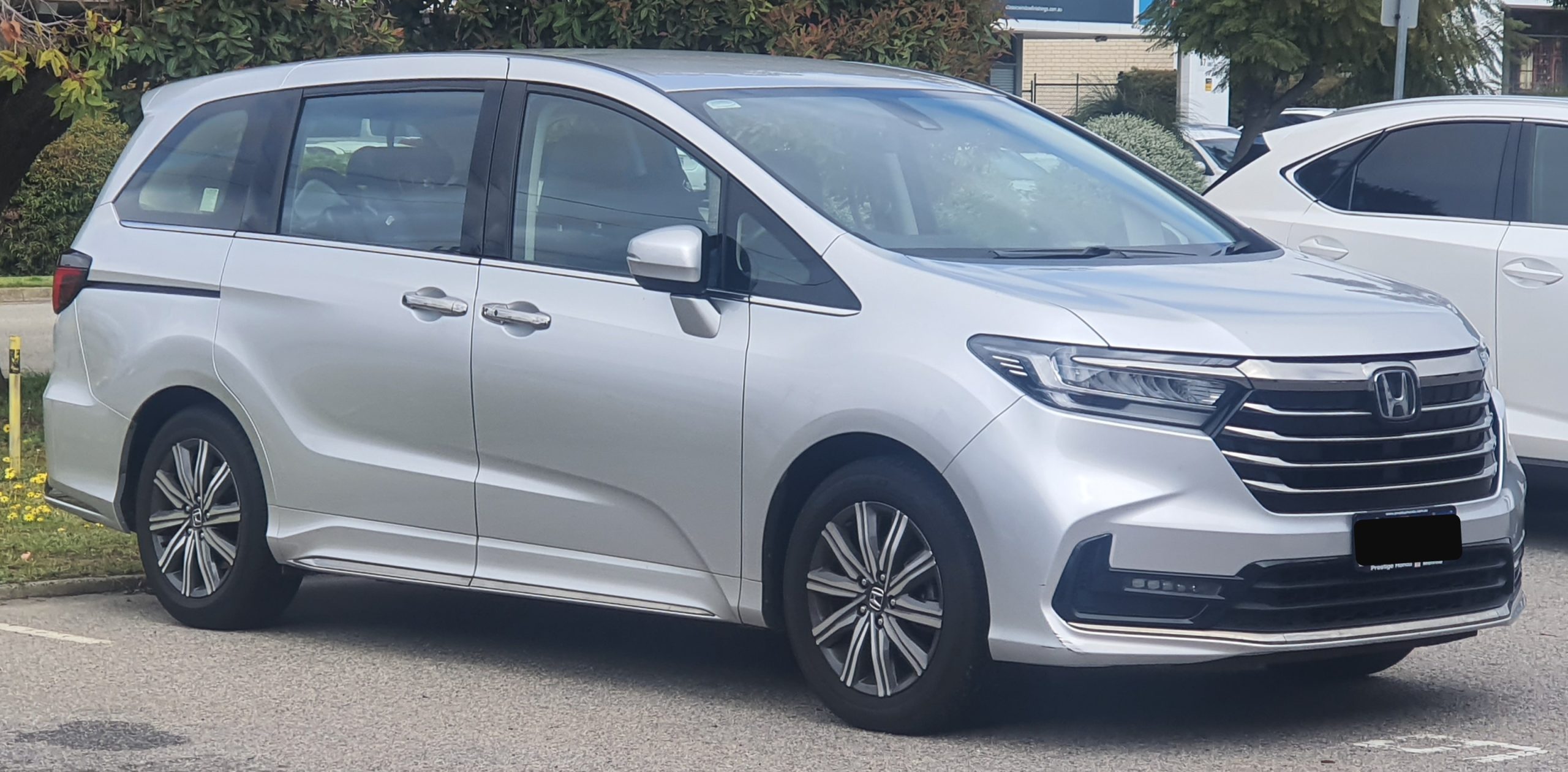
Storage is another area where the Odyssey excels. Beyond its generous cargo capacity behind the third row (perfect for sports equipment and science projects), the minivan features thoughtful compartments throughout the cabin, including door pockets sized for water bottles, center console storage, and seatback pockets for books and tablets.
The available built-in vacuum cleaner HondaVAC has saved countless parents from the accumulation of crushed cereal and forgotten snacks. Safety features abound, with the Honda Sensing suite providing collision mitigation braking, road departure mitigation, adaptive cruise control, and lane-keeping assistance.
The available CabinWatch system lets parents keep an eye on rear-seat passengers via the dashboard display eliminating the need to turn around while driving. Similarly, CabinTalk allows parents to speak to third-row passengers through the rear speakers or headphones, ending the need to raise voices.
Fuel efficiency remains reasonable despite the Odyssey’s size, with the V6 engine delivering adequate power while maintaining economy suitable for daily short trips. The smooth ride quality and relatively responsive handling belie its dimensions, making school zone navigation less stressful than might be expected of a vehicle this size.
2. Subaru Outback
The Subaru Outback represents a compelling alternative for families who need school run practicality but aren’t ready to commit to minivan ownership.
This wagon-crossover hybrid strikes an excellent balance between utility and drivability, with capabilities particularly valued by families in regions with challenging weather.
The Outback’s standard all-wheel drive system delivers remarkable confidence during school runs regardless of conditions whether facing morning ice, afternoon downpours, or unexpected snow flurries.
This weather versatility eliminates the anxiety that comes with uncertain conditions, ensuring children arrive at school safely and on time without drama. The raised ground clearance also helps go through the poorly maintained school parking lots and unpaved drop-off areas at sports fields and outdoor activities.
Interior space in the Outback proves surprisingly generous. While not as cavernous as a dedicated minivan, the rear seats offer ample room for three children or teenagers with their backpacks.
The wagon configuration provides 32.5 cubic feet of cargo space behind the rear seats more than enough for multiple sports bags, musical instruments, and science fair projects.
The wide-opening tailgate with available power operation simplifies loading and unloading, while roof rails accommodate additional cargo or sporting equipment.
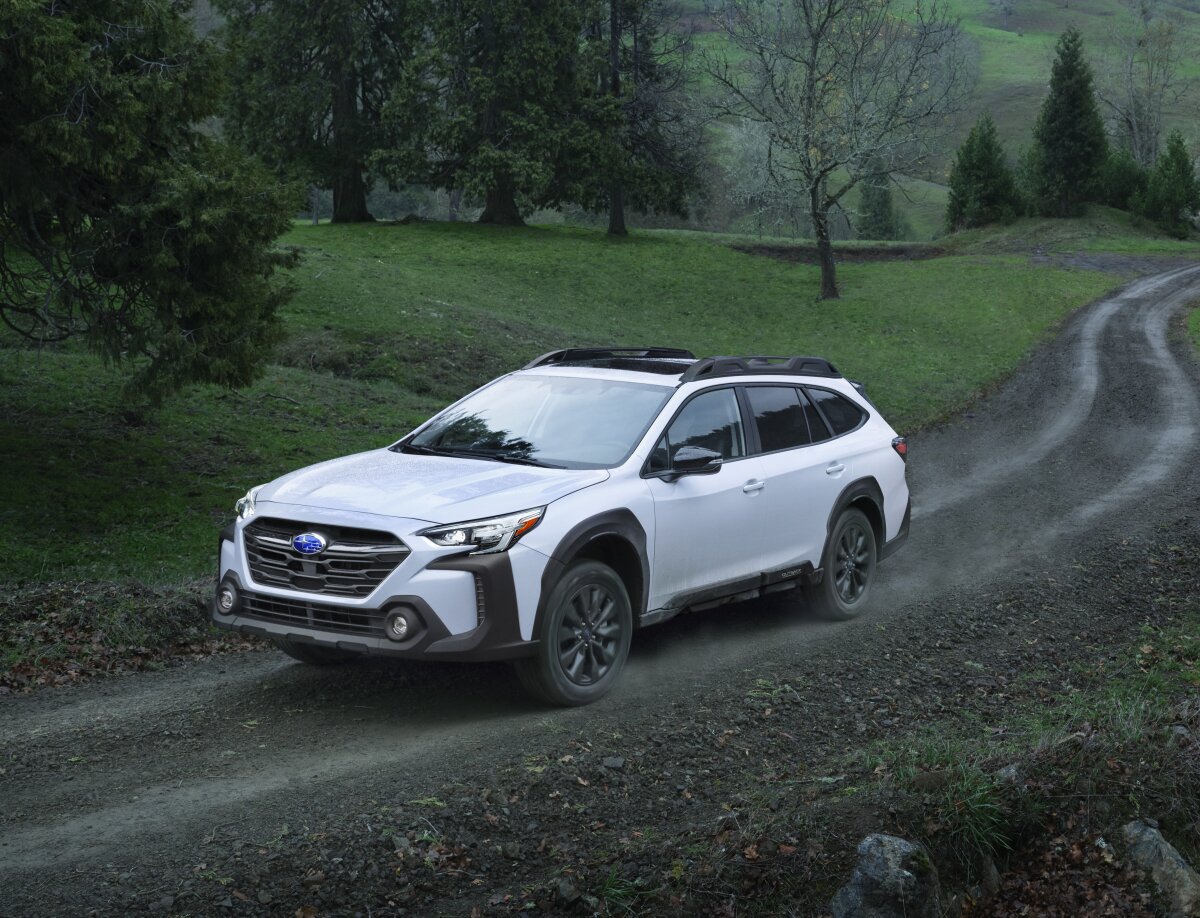
Subaru’s commitment to safety makes the Outback particularly appealing for school transportation. The EyeSight Driver Assist Technology standard across all trims includes adaptive cruise control, lane-keeping assist, and pre-collision braking.
The available DriverFocus Distraction Mitigation System uses facial recognition technology to identify signs of driver fatigue or distraction a potential lifesaver during early morning drives after sleepless nights with younger children.
The Outback also offers excellent visibility a crucial factor when going through the busy school zones filled with unpredictable child pedestrians. The large windows, relatively low beltline, and available 180-degree front-view monitor help drivers spot small children who might dart unexpectedly between parked cars.
Fuel efficiency remains impressive for a vehicle with this level of capability, with the base engine delivering solid mileage figures suitable for daily school runs.
The comfortable but controlled ride quality helps keep potentially motion-sick passengers comfortable while still providing enough feedback to make the vehicle enjoyable for parents who must spend significant time behind the wheel each week.
3. Toyota Sienna Hybrid
The Toyota Sienna Hybrid represents the evolution of the school run vehicle, addressing the traditional minivan’s greatest weakness fuel efficiency while retaining all the family-friendly features that make this category ideal for educational transportation.
Its standard hybrid powertrain delivers exceptional fuel economy, with EPA estimates approaching 36 mpg combined nearly double what traditional minivans achieved just a generation ago.
This efficiency proves particularly valuable for school runs, which often involve multiple short trips with engine cold starts and frequent idling in pickup lines.
Like its minivan competitors, the Sienna offers sliding doors on both sides for easy access in tight spaces. The available hands-free operation proves invaluable when approaching the vehicle with arms full of children’s projects or sports equipment.
The low step-in height benefits both young children and grandparents who might assist with pickup duties. Interior space utilization shows Toyota’s deep understanding of family needs.
The Sienna accommodates seven or eight passengers depending on configuration, with ample room in all three rows. The Super Long Slide second-row captain’s chairs in seven-passenger models can move nearly 25 inches, creating limousine-like legroom or sliding forward to increase cargo capacity.
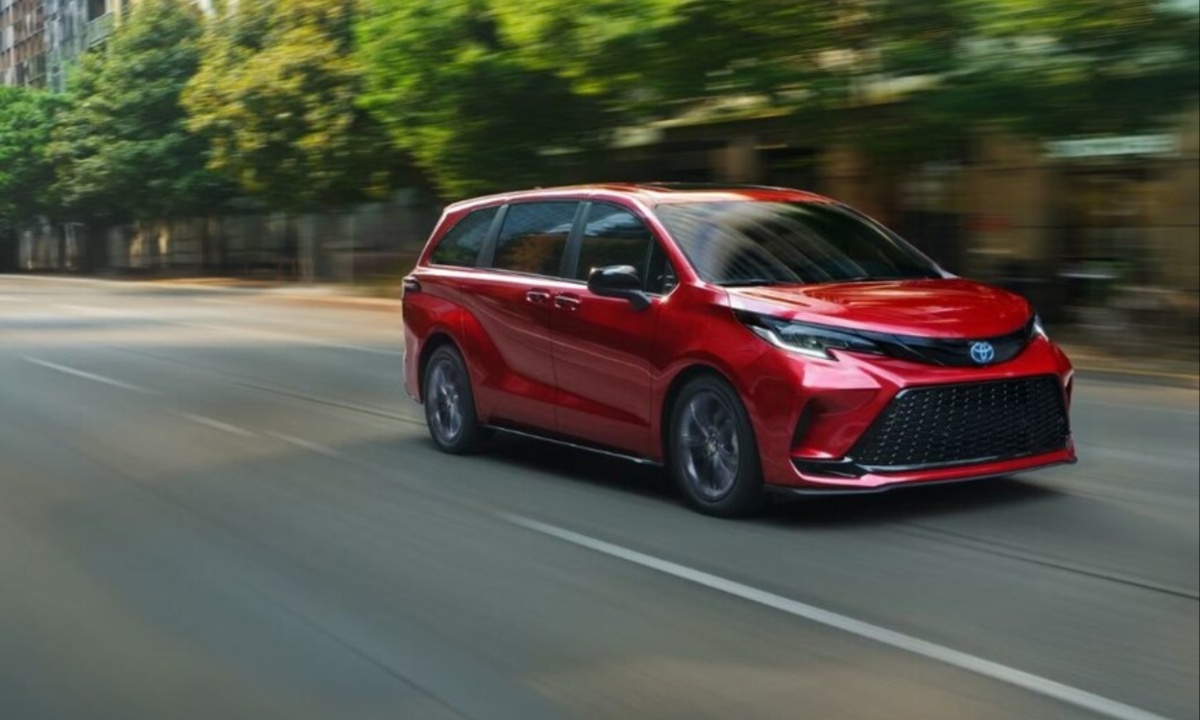
The available built-in refrigerator keeps lunches and snacks fresh during hot weather, while the vacuum system helps manage the inevitable crumb disasters.
Toyota’s Safety Sense 2.0 suite comes standard, providing comprehensive protection with features like pre-collision system with pedestrian detection, full-speed dynamic radar cruise control, lane departure alert with steering assist, and automatic high beams.
The available digital rearview mirror improves visibility even when the vehicle is fully loaded with passengers and gear. The Sienna’s available all-wheel drive system, rare among hybrids, provides additional security during inclement weather without sacrificing fuel economy.
This feature proves particularly valuable for families in northern climates where winter school runs might involve snow and ice. Perhaps most importantly for the school run, the Sienna delivers a remarkably quiet cabin thanks to its hybrid operation and extensive sound insulation.
This peaceful environment allows for last-minute homework reviews, important conversations about upcoming school events, or simply a moment of calm before the busy school day begins.
The smooth acceleration characteristic of hybrid powertrains also contributes to passenger comfort, reducing the motion sickness that some children experience during the morning commute.
4. Volvo XC90
The Volvo XC90 demonstrates that luxury and family practicality need not be mutually exclusive when it comes to school transportation. This premium SUV combines Scandinavian design sensibilities with thoughtful features specifically beneficial to the school run ritual, all wrapped in Volvo’s legendary safety engineering.
Safety innovations form the cornerstone of the XC90’s appeal for family transportation. Volvo’s comprehensive approach includes both passive protection and active prevention technologies.
The vehicle structure incorporates ultra-high-strength boron steel forming a protective safety cage, while run-off road protection and mitigation help prevent or minimize consequences of leaving the roadway a valuable feature during early morning drives when driver alertness might be compromised.
The IntelliSafe suite adds pilot assist semi-autonomous driving capability, blind spot information with steer assist, cross traffic alert, and collision avoidance systems specifically designed to detect cyclists and pedestrians, particularly important in school zones. The XC90’s three-row configuration accommodates up to seven passengers, with integrated booster seats available in the second row.
These cleverly designed boosters deploy from the seat bottom, eliminating the need for separate child seats for older children who still require elevation. The seats themselves offer exceptional comfort with available heating and ventilation appreciated during seasonal extremes.
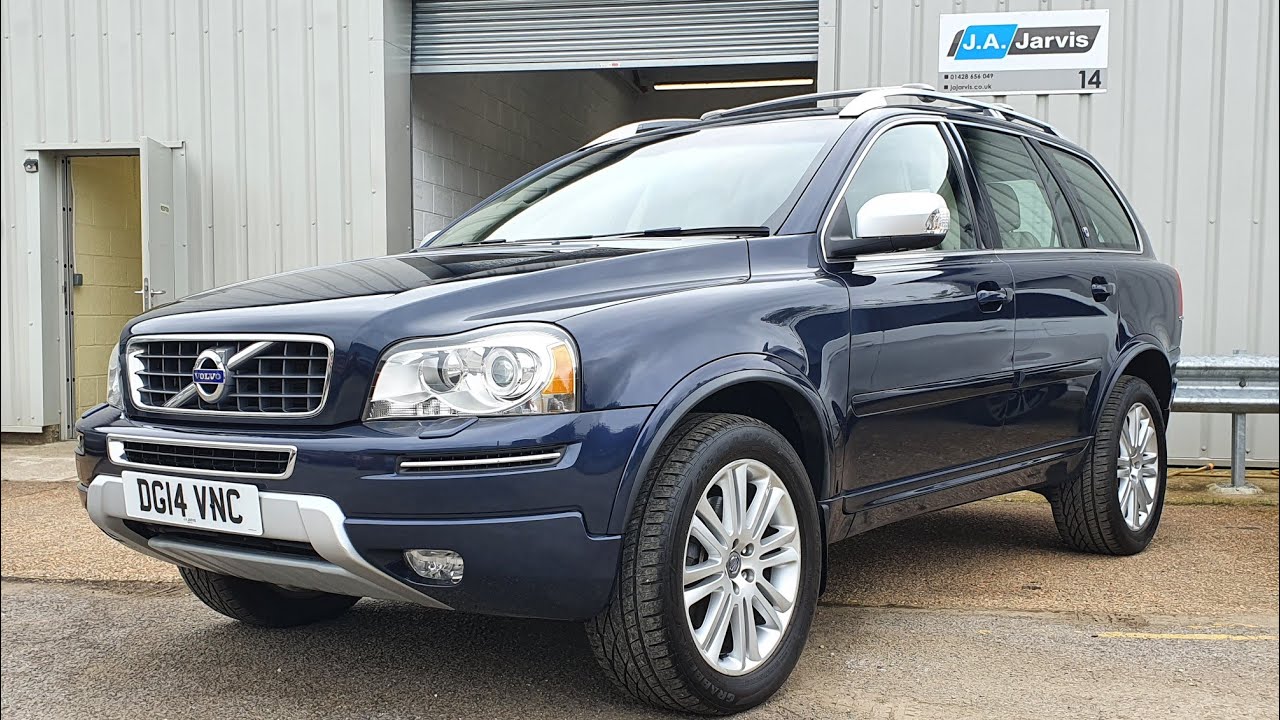
Interior air quality increasingly important to health-conscious families receives special attention through Volvo’s CleanZone technology. The system employs a multi-filter approach that monitors incoming air quality and automatically closes external vents when necessary.
This feature proves particularly valuable when idling in congested pickup lines where exhaust fumes might otherwise enter the cabin. The XC90’s vertical rear design maximizes cargo capacity while providing excellent visibility, crucial for going through the crowded school parking lots.
Power-folding headrests in the third row can be lowered from the driver’s position for improved rearward visibility when not carrying passengers, while the available 360-degree camera system provides comprehensive awareness during tight maneuvering.
Available plug-in hybrid models offer sufficient electric-only range to complete many school runs without engaging the gasoline engine, reducing both fuel costs and emissions around school zones.
The silent operation of electric mode also contributes to a peaceful cabin environment, allowing final preparations for tests or presentations during the morning commute.
Also Read: 5 Cars That Can Run Without Constant Upkeep and 5 That Always Need Attention
5. Kia Telluride
The Kia Telluride has rapidly established itself as a benchmark for mainstream three-row SUVs, offering exceptional value with features particularly well-suited to school transportation duties.
Its boxy, upright design maximizes interior space within reasonable exterior dimensions, creating a vehicle that feels substantial but remains manageable in school parking lots and drop-off lanes.
Interior space utilization stands among the Telluride’s greatest strengths. Unlike some competitors with tight third rows suitable only for occasional use, the Telluride offers genuine comfort for adult-sized passengers in all positions, valuable for carpooling arrangements involving older students.
Second-row captain’s chairs (available on upper trims) create a convenient pass-through to the third row, while also reducing sibling boundary disputes during the morning commute.
The Telluride demonstrates particular attention to the modern family’s connectivity needs. Multiple USB ports throughout the cabin ensure devices remain charged, while the available Quiet Mode allows drivers to mute the rear speakers, perfect for early morning drives when some passengers might catch a few extra minutes of sleep.
The Driver Talk in-car intercom system amplifies the driver’s voice through the rear speakers, eliminating the need to turn around or raise voices to address rear-seat passengers.
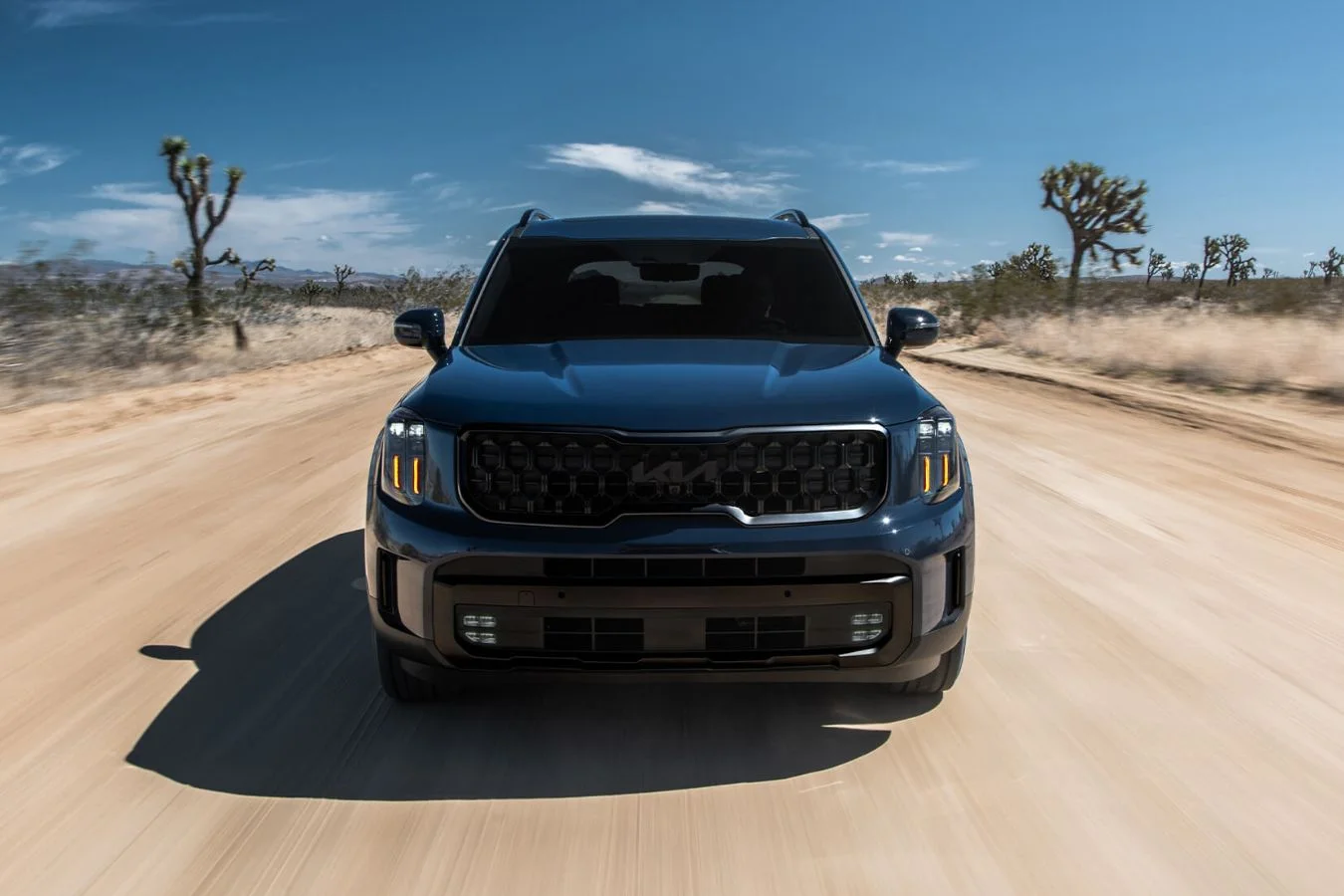
Safety technology abounds, with standard features including forward collision avoidance, lane keeping assist, blind spot collision avoidance, rear cross-traffic collision avoidance, and safe exit assist.
This last feature proves particularly valuable during school drop-offs, warning occupants of approaching traffic when opening doors, potentially preventing accidents when children exit hastily. The Telluride offers impressive visibility thanks to large windows and a relatively upright seating position.
The available blind-view monitor displays a camera feed of the appropriate blind spot in the instrument cluster when turn signals are activated, particularly useful in busy school zones where small children might be difficult to spot in conventional mirrors. Perhaps most appealing for school run duty, the Telluride delivers exceptional reliability combined with Kia’s outstanding warranty coverage.
This peace of mind proves invaluable for families who depend on their vehicle for daily educational transportation, where breakdowns could result in missed classes or important activities. The value proposition extends to fuel efficiency that, while not class-leading, remains reasonable for a vehicle of this size and capability.
5 Cars That Can’t Keep Up with the School Run
Not every car is cut out for the chaos of the morning school run. Between tight parking spots, endless traffic, and the daily scramble of backpacks, lunchboxes, and forgotten projects, some cars just fall flat.
Whether it’s a lack of space, poor reliability, or just being downright impractical, these five vehicles simply can’t keep up with the real-world demands of getting the kids to school—and we’re not sugarcoating it.
1. Two-Door Sports Cars (e.g., Porsche 911)
The Porsche 911 represents the epitome of driving engagement and performance engineering, with decades of refinement creating an automotive icon.
However, these same characteristics that make it exceptional on winding roads or track days create significant challenges when pressed into school run service.
The fundamental two-door configuration presents the most obvious limitation. The awkward access to rear seats requires contortionist skills from both parents and children, with the front seats folding and sliding forward to create a narrow passage to the back.
This process cumbersome even with cooperative teenagers becomes exponentially more difficult with younger children who need assistance with car seats, backpacks, and winter clothing.
Speaking of car seats, installing these essential safety devices in the 911’s rear seats requires patience and dexterity that borders on mechanical engineering expertise.
The limited space and sports-focused design create ergonomic challenges even for the most installation-savvy parents. Once installed, the tight confines make buckling and unbuckling children a daily struggle, especially when multiple children need assistance simultaneously during the morning rush.

Storage capacity presents another substantial limitation. The 911’s front trunk (or “frunk”) offers minimal space enough perhaps for a single backpack but woefully inadequate for the combination of school projects, sports equipment, musical instruments, and lunch boxes that typically accompany modern students.
Science fair projects, art portfolios, and group presentation materials simply won’t fit without creative external solutions. The 911’s low seating position, while providing excellent road feel and driving dynamics, creates visibility challenges in busy school environments.
Spotting small children crossing between parked vehicles becomes more difficult, while going through the speed bumps and entry/exit ramps requires careful attention to avoid expensive damage to the low front splitter.
The performance-oriented suspension, while excellent for handling, translates every bump and pothole directly to occupants potentially disturbing carefully completed homework or causing motion sickness in younger passengers.
Perhaps most practically concerning for daily school use, the 911’s high-performance nature typically demands premium fuel, specialized maintenance schedules, and replacement parts that command significant cost premiums.
Exposure to the inevitable door dings, interior spills, and general wear associated with daily child transportation quickly diminishes both the vehicle’s condition and its resale value.
The psychological stress of protecting such an investment from the natural consequences of children’s use creates unnecessary tension in what should be quality family time.
2. Full-Size Pickup Trucks (e.g., Ford F-250 Super Duty)
The Ford F-250 Super Duty exemplifies American truck engineering, designed to conquer challenging work environments with impressive capability and durability.
However, these same attributes that make it exceptional on construction sites or towing heavy loads create significant complications when repurposed for the daily school commute.
The massive dimensions approaching 22 feet in length and nearly 8 feet in width with mirrors extended present immediate challenges in school environments designed for passenger vehicles.
Going through the tight drop-off lanes, compact parking spaces, and crowded parent lots becomes an exercise in precision that contradicts the truck’s work-focused design philosophy.
The substantial height creates both practical and safety concerns specific to child transportation. The significant step-up distance proves challenging for younger children, necessitating either installed running boards or parental assistance for every entry and exit.
This height differential also creates blind spots directly around the vehicle perimeter precisely where small children might be walking or playing in school zones.
While modern trucks incorporate camera systems to address these visibility limitations, no electronic system fully compensates for the fundamental physics of the raised driver position relative to small pedestrians.

Interior ergonomics, while excellent for work applications, present complications for daily educational transport. The cabin width places children at a considerable distance from the driver, making it difficult to assist with last-minute preparations, seatbelts, or dropped items while remaining behind the wheel.
Entry-level trims often feature vinyl or cloth surfaces designed for durability rather than comfort, contributing to an institutional feel rather than a nurturing environment for nervous students.
Fuel efficiency represents another significant drawback for school transportation duty. The F-250’s powerful engines deliver impressive capability but consume substantial fuel even during short trips particularly noticeable during the cold-start conditions typical of morning departures.
The specialized parking requirements further complicate the ownership experience, with many residential garages unable to accommodate the vehicle’s dimensions, forcing outdoor storage that necessitates additional time for weather clearing during seasonal extremes.
Perhaps most relevant to the specific requirements of school transportation, the F-250’s work-optimized suspension calibration prioritizes load-carrying capacity over unloaded ride quality.
This translates to a firm, sometimes bouncy ride character when traveling without cargo, precisely the condition during most school trips. This ride quality can disturb projects, cause motion sickness in susceptible children, and generally start the educational day with unnecessary physical discomfort that might impact learning readiness.
3. Ultra-Luxury Sedans (e.g., Bentley Flying Spur)
The Bentley Flying Spur represents the pinnacle of handcrafted luxury motoring, with materials, craftsmanship, and attention to detail that justify its substantial price tag.
However, this same exclusivity and focus on adult luxury creates a paradoxical mismatch with the practical demands of daily school transportation.
The most immediate concern involves the inevitable wear and tear associated with children’s use. The meticulously crafted leather upholstery, hand-finished wood veneers, and wool carpeting often in light colors that showcase craftsmanship prove exceptionally vulnerable to spilled drinks, dropped snacks, muddy shoes, and art supplies that invariably accompany children to and from educational activities.
The psychological burden of maintaining such an investment-grade vehicle in pristine condition creates unnecessary tension during what should be relaxed family time.
Parents may find themselves constantly monitoring children’s behavior, restricting normal activities, and creating stress around food, drinks, or materials that might damage the interior.
This atmosphere contradicts the supportive, nurturing environment that benefits children during potentially stressful school transitions. Practical functionality, while excellent for adult passengers, falls short for educational transportation.
The Flying Spur’s trunk, while adequate for luggage, struggles with awkwardly shaped school projects, sports equipment, and musical instruments.
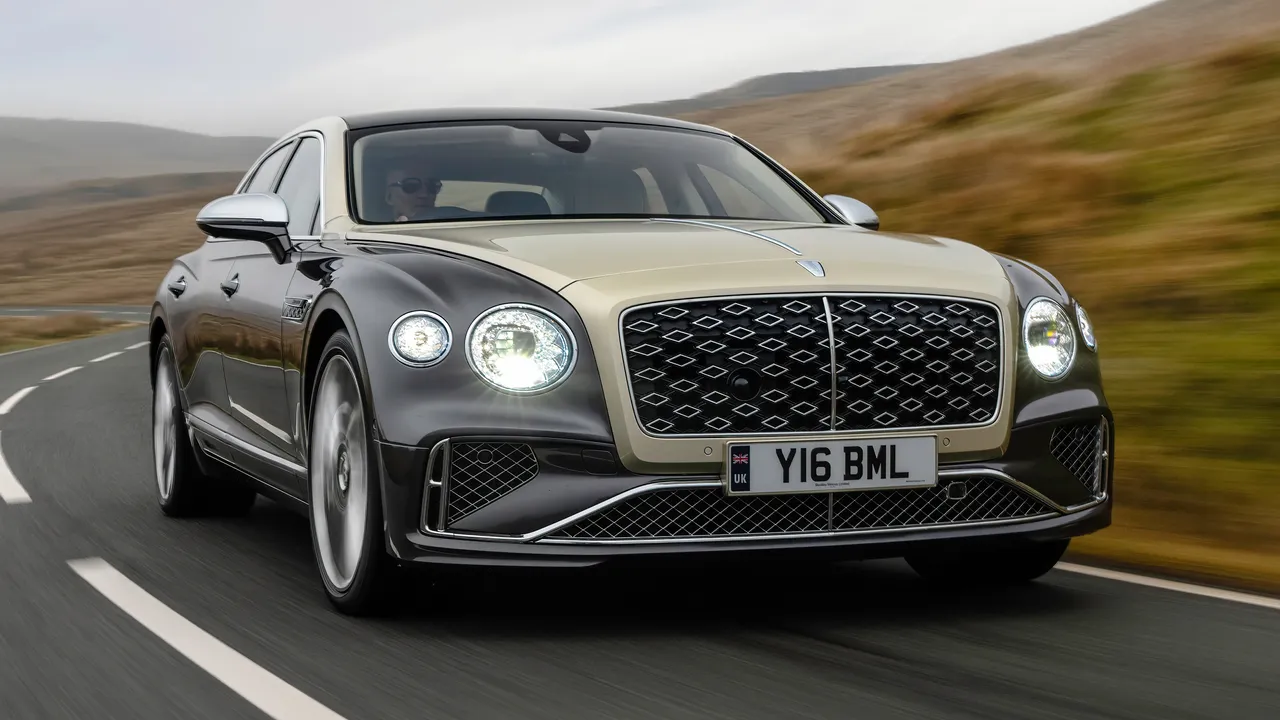
The sloping roofline that contributes to the vehicle’s elegant aesthetic simultaneously limits headroom for growing teenagers, especially when entering and exiting.
Car seat installation proves challenging in many cases, with premium leather surfaces sometimes complicating secure attachment, while the sculpted rear seats may not provide ideal angles for proper child restraint positioning.
The vehicle’s exceptional value also creates security concerns unique to school environments. The conspicuous nature of ultra-luxury vehicles attracts unwanted attention, potentially making children targets for theft or identifying them with wealth disparity that might complicate social dynamics with classmates.
The substantial replacement cost for even minor damage creates constant anxiety during drop-off and pickup, when other parents or inexperienced young drivers might accidentally contact the vehicle in crowded queues.
Maintenance requirements add another layer of complication for school use. The specialized service needs, dealer-specific parts, and extended service intervals can create scheduling conflicts with school calendars.
The potential for exotic materials or finishes to react poorly to common cleaning products, necessary after childhood accidents, further complicates ownership.
Even the performance characteristics often including firm suspension calibrations and powerful engines may prioritize adult appreciation over the comfort needs of younger passengers prone to motion sickness or sensitivity to road imperfections.
4. Exotic Supercars (e.g., Lamborghini Aventador)
The Lamborghini Aventador represents automotive theater at its most dramatic a mid-engine supercar designed to deliver sensory overload through its striking design, earth-shaking exhaust note, and blistering performance.
However, these same attributes that make it an exceptional weekend toy create profound incompatibilities with the practical demands of school transportation.
The most fundamental limitation begins with the passenger configuration the Aventador offers just two seats, immediately disqualifying it for families with multiple children or carpooling arrangements that form an essential part of many school communities.
Access proves exceptionally challenging due to the dramatic scissor doors and extremely low ride height. These theatrical elements require substantial clear space alongside the vehicle rarely available in congested school drop-off zones while the carbon fiber monocoque creates high, wide sills that must be go through when entering or exiting.
Children must essentially drop down into the seats while adults must perform an ungraceful folding maneuver wholly inconsistent with maintaining parental dignity during school arrival.
Interior ergonomics prioritize driver engagement over practical usability. Storage proves virtually non-existent, with minimal space for even a standard backpack, let alone the combined volume of educational materials, lunch containers, sports equipment, and musical instruments that typically accompany students.

Climate control systems while technically present often struggle against the greenhouse effect created by the expansive glass surfaces, creating uncomfortable temperature extremes during seasonal weather.
Visibility limitations, particularly rearward, create safety concerns in environments where small children might be present but difficult to spot through the minimal rear window.
Beyond the physical limitations, the Aventador creates substantial social complications in educational settings. The dramatic exhaust note delightful on open roads becomes disruptive and potentially offensive when arriving at morning drop-off, where many families and staff prefer quiet, low-stress environments to begin the educational day.
The vehicle’s extreme value and exotic nature create unwanted attention that may isolate children from peers or create uncomfortable distinctions based on family financial status rather than educational merit.
The practical ownership experience presents further complications for school use. The minimal ground clearance requires careful navigation of speed bumps and driveway transitions common around educational facilities.
Fuel consumption approaches comical levels during the short-trip, cold-start conditions typical of school runs. Perhaps most significantly, the specialized maintenance requirements demand attention from factory-trained technicians, often located only in major metropolitan areas creating potential conflicts with school schedules when service is required.
5. Classic Vintage Cars (e.g., 1960s Jaguar E-Type)
The Jaguar E-Type represents automotive design at its most timeless, a rolling sculpture that continues to fascinate enthusiasts decades after its introduction.
However, the same characteristics that make it an exceptional weekend pleasure create significant incompatibilities with the practical demands of modern school transportation.
Safety considerations present the most immediate concern. The E-Type predates nearly all modern safety innovations, lacking airbags, anti-lock brakes, electronic stability control, and crumple zones engineered to modern standards.
The original lap belts provide minimal protection compared to current three-point systems, while the absence of LATCH/ISOFIX anchors complicates proper car seat installation for younger children. Reliability presents another substantial challenge for educational transportation, where punctuality remains essential.
Vintage vehicles require more frequent maintenance, specialized knowledge for operation, and often exhibit temperamental behavior during cold starts precisely the condition encountered during morning school departures.
The aging electrical systems prove particularly vulnerable to moisture and temperature extremes, potentially leaving families stranded at inopportune moments.
The absence of modern climate control systems creates uncomfortable experiences during seasonal extremes, while defrosting and demisting capabilities often prove marginal compared to contemporary standards.
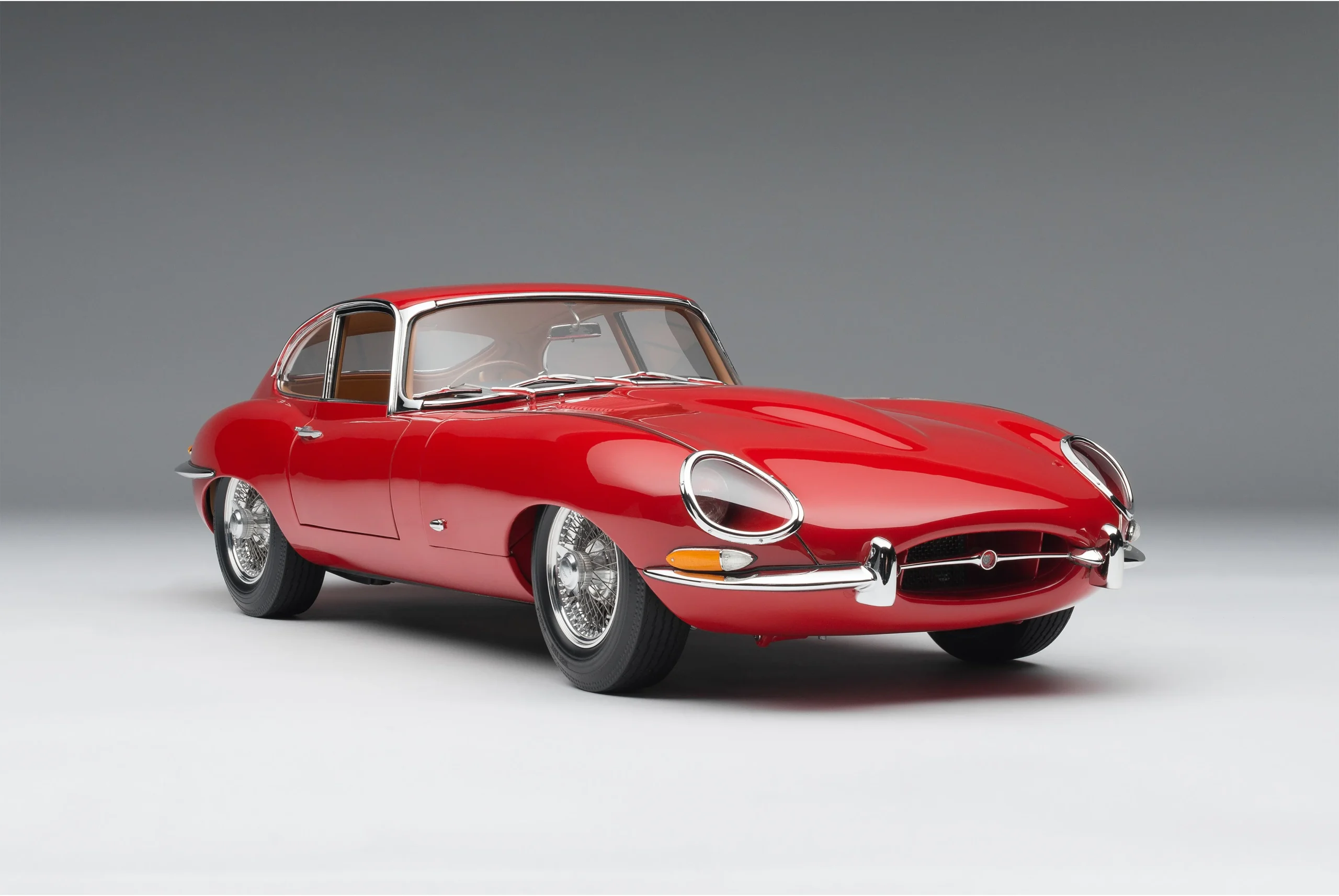
Ergonomic limitations become immediately apparent when using classic cars for child transportation. The narrow footwells, limited adjustment range, and original seating designs prioritized style over long-term comfort or proper support.
Entry and exit require flexibility rarely possessed by younger children, while the low seating position complicates visibility for both drivers going through the school zones and children attempting to spot their school or friends during arrival.
The practical functionality falls short of modern expectations in numerous areas specific to school transportation. Storage space proves minimal compared to contemporary needs, with the trunk struggling to accommodate modern backpacks, let alone sports equipment or science projects.
The original gauges and controls while aesthetically pleasing lack the clear legibility and intuitive operation that helps harried parents focus on the surrounding environment during busy drop-off periods.
The absence of central locking necessitates securing each door individually a time-consuming process when managing children and their belongings. Perhaps most significantly for daily educational use, classic cars require substantial protective measures to maintain their condition and value.
Exposure to the elements during school hours potentially accelerates deterioration of chrome, paintwork, and interior materials particularly concerning given the increasing value of well-maintained examples.
The inevitable minor collisions, door dings, and interior spills that accompany child transportation could potentially diminish both the aesthetic appeal and financial value of what has become, for many owners, a significant investment rather than merely a transportation device.
Also Read: 5 Trucks That Survive Generations and 5 That Die Young

